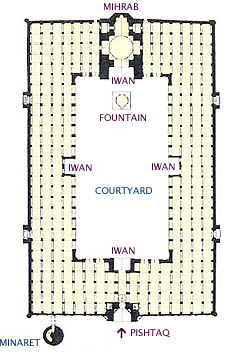|
KALAN MOSQUE
|
TAKEO KAMIYA
|
KALAN MOSQUE
|
TAKEO KAMIYA
|
Since eCentral Asiaf is an inland area without facing any sea, its location is not easy to imagine for Japanese and Europeans. It would be more or less easier to capture when hearing that it is actually surrounded by countries as Russia in the north, China in the east, and Afghanistan in the south, used to be a territory of U.S.S.R., and currently consisting of five Islamic countries (Kazakhstan, Uzbekistan, Turkmenistan, Tajikistan and Kirgizstan). The most famed historical cities in Central Asia are Samarkand, Bukhara, and Khiva, all of which are now in Uzbekistan. They would be more familiar for recent Japanese in hearing that they are the cities along the Silk Road, which has come to be very popular through TV programs. The area belonged to the Buddhist sphere in bygone days, as the city-name Bukhara was derived from Sanskrit eBiharaf which indicated a Buddhist monastery. However, since the people were Islamized, Buddhist temples have entirely disappeared and what one can see now as religious architecture are mosques or mausoleums of Islam after the 8th century.
  Pishtaq (Gate) and drum of the Kalan Mosque
When Mongol army under Genghis Khan made an expedition to the west in 1220, the cities in Central Asia were also exhaustively destroyed. However, a huge mosque or a mausoleum flaunting the rulersf power makes an impression like a fortress full of intrepid mettle rather than a pious religious facility. In that sense, I felt Bukharafs religious buildings were more desirable than those of Samarkand.

Although the history of Bukhara seems to go back to the 1st century B.C.E., the framework of the existing city was established after the Islamization in the 8th century. It was in 794 that the Friday Mosque, in which whole inhabitants of the city could congregate for worship, was eventually erected in the present precinct after several times of renovations, having started as a wooden structure.
The present mosque itself was reconstructed in 1514. However, owing to the negation of religions during the Soviet age, it was converted into a warehouse in a devastated condition. Restoration work started in the 1970s, particularly after the independence of the country in the wake of the collapse of the U.S.S.R., and a little excessive restoration and reconstruction has been executed, giving itself an almost brand-new look like the other historical buildings in the country.

It can be said the restoration was a complete success, normously recovering fine views efrom a dilapidated state seen in old photographs. The mosque still was not decorated excessively like the gatehouse, the reason of which might be that the whole design of this mosque was originally so simple in composition with nerely restrained plain ornamentation. The plan of the Kalan Mosque is the Four-Iwan-type of Persia, with a single tree in the foreground of the courtyard and the 19th centuryfs octagonal kiosk (fountain for peoplefs ablutions) in the background. The surrounding galleries with uniform arcades are punctuated by four Iwans standing loftily in the center of each side. This yard space, which limits elements of colors and shapes to the fewest, seems to have a sacred atmosphere as if to invite deep meditation.
  Birdfs-eye view and top of Kalan Minaret
One goes to the Kalan Minaret by a small bridge from the roof of the mosque and goes up a spiral staircase to the top balcony. Looking down at the entire mosque from there, one can discern the whole building covered by small domes of as many as 288 in geometrical repetitions. (In "Chugai Nippo" 2004) E-mail to: kamiya@t.email.ne.jp
|